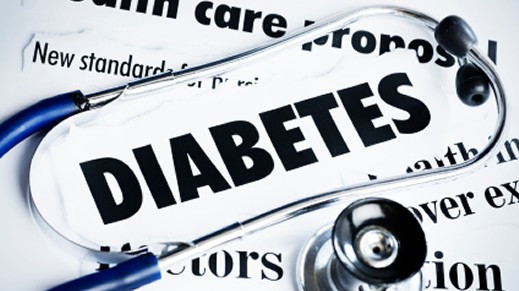Diabetes-related complications occur substantially among 14- to 25-year-old patients with type 1 or type 2 diabetes, but especially in those with type 2 diabetes, according to a new study published in the February 28 issue of the Journal of the American Medical Association.
Dana Dabelea, MD, of Colorado School of Public Health, Denver, and colleagues analyzed data from a nationally representative registry of young patients who had had diabetes for a mean of 7.9 years.
Their logistic regression model estimated that, at age 21, one in three patients with type 1 diabetes and almost three in four patients with type 2 diabetes had at least one of the following complications or comorbidities: diabetic kidney disease, retinopathy, peripheral neuropathy, arterial stiffness, or hypertension.
“Providers…might not expect to see [diabetes] complications at such a young age and after such a short duration,” Dr Dabelea told Medscape Medical News.
The findings suggest that “once [young patients] have diabetes, monitoring their glucose control and other risk factors (lipids, obesity, blood pressure) is going to be crucial to prevent the development of these complications or to slow their progression,” she stressed.
Clinicians should follow the American Diabetes Association (ADA) guidelines for monitoring HbA1c, lipids, microalbuminuria, and blood pressure in young patients with diabetes, as well as the recommendations for eye examinations, foot examinations, and other care.
Based on the HbA1c measures, treatment may have to be modified for optimal glucose control. And a small number of patients may require lipid lowering or antihypertensive therapies at a young age.
Nephropathy, Neuropathy, Retinopathy in Type 1 vs Type 2 Diabetes
The prevalence of type 2 diabetes among children and adolescents has been increasing in most populations since the 1990s, and the prevalence of type 1 diabetes has also been increasing for a long time in the United States and, in fact, worldwide, Dr Dabelea and colleagues observe.
But it has not been clear if diabetes complications (retinopathy, neuropathy, and nephropathy) and comorbidities (hypertension and arterial stiffness) differ in adolescents and young adults with type 2 diabetes vs type 1 diabetes.
To investigate this, the researchers examined data from the SEARCH for Diabetes in Youth registry at five sites in the United States from patients who had been diagnosed with type 1 or type 2 diabetes when they were 10 to 20 years old and who later had diabetes complications and comorbidities measured in a single visit from 2011 to 2015.
They identified 1746 patients with type 1 diabetes and 272 patients with type 2 diabetes.
On average, the patients with type 1 diabetes had been diagnosed when they were 10 years old, and they were 18 years old at the follow-up visit; the patients with type 2 diabetes had been diagnosed when they were 14 years old and were 22 years old at the follow-up visit.
Most patients with type 1 diabetes were white (76%), followed by Hispanic (12%), black (8%), other (4%), or Indian (<1%), and most were normal weight (59%) or overweight (27%). Most (41%) came from families in the highest annual household income category (>$75,000 per annum).
In contrast, most patients with type 2 diabetes were black (43%), followed by white (26%), Hispanic (21%), Indian (7%), or other (3%), and most were obese (72%) or overweight (18%). Most (41%) came from families in the lowest annual household income category (<$25,000).
Monitoring to Spot or Slow Microvascular Complications
At the follow-up visit, the teenagers and young adults with type 2 diabetes had greater odds of having diabetic kidney disease, retinopathy, and peripheral neuropathy than those with type 1 diabetes, after adjustment for changes in glycemic control, central obesity (waist-to-height ratio), and arterial blood pressure over time.
Patients with type 2 diabetes were also more likely to have hypertension and arterial stiffness than patients with type 1 diabetes. However, after adjustment for central obesity, patients with type 2 diabetes no longer had increased odds of these outcomes.
Odds of Complications/Comorbidities With Type 2 Diabetes vs Type 1 Diabetes
| Complication | Type 2 diabetes, % | Type 1 diabetes, % | HR (95% CI)* | P |
| Diabetic kidney disease | 19.9 | 5.8 | 2.58 (1.39–4.81) | 0.003 |
| Retinopathy | 9.1 | 5.6 | 2.24 (1.11–4.50) | 0.02 |
| Peripheral neuropathy | 17.7 | 8.5 | 2.52 (1.43–4.43) | 0.001 |
| Arterial stiffness | 47.4 | 11.6 | 1.07 (0.63–1.84) | 0.80 |
| Hypertension | 21.6 | 10.1 | 0.85 (0.50–1.45) | 0.55 |
“We were surprised” at the high rate of complications in these young patients, Dr Dabelea said, “because one would think that with the current better treatments that are available — especially more advanced insulin regimens and pumps and glucose monitoring — we may not have seen so many complications.
“We do have better treatments, but on the other hand, we have a changing population” with more patients with type 2 diabetes, “which is a totally different disease and strongly associated with obesity,” she explained.
“These kids come from disadvantaged families, [often with a single parent], mostly from [racial] minorities, and some don’t have a diabetes provider.”
The findings overall “support early monitoring for development of complications” among all young patients, with both types of diabetes, she and her colleagues conclude.





